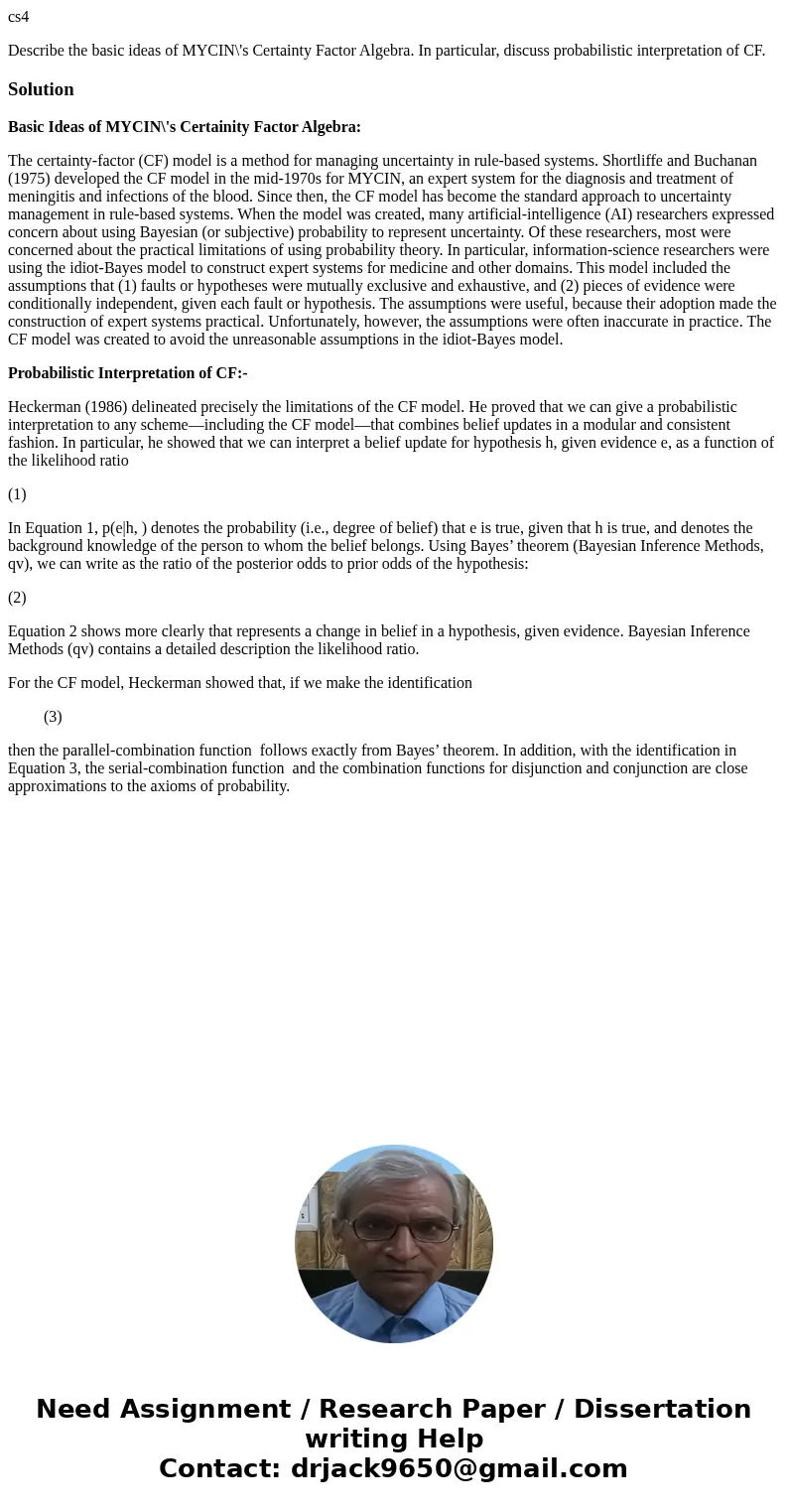cs4 Describe the basic ideas of MYCINs Certainty Factor Alge
cs4
Describe the basic ideas of MYCIN\'s Certainty Factor Algebra. In particular, discuss probabilistic interpretation of CF.Solution
Basic Ideas of MYCIN\'s Certainity Factor Algebra:
The certainty-factor (CF) model is a method for managing uncertainty in rule-based systems. Shortliffe and Buchanan (1975) developed the CF model in the mid-1970s for MYCIN, an expert system for the diagnosis and treatment of meningitis and infections of the blood. Since then, the CF model has become the standard approach to uncertainty management in rule-based systems. When the model was created, many artificial-intelligence (AI) researchers expressed concern about using Bayesian (or subjective) probability to represent uncertainty. Of these researchers, most were concerned about the practical limitations of using probability theory. In particular, information-science researchers were using the idiot-Bayes model to construct expert systems for medicine and other domains. This model included the assumptions that (1) faults or hypotheses were mutually exclusive and exhaustive, and (2) pieces of evidence were conditionally independent, given each fault or hypothesis. The assumptions were useful, because their adoption made the construction of expert systems practical. Unfortunately, however, the assumptions were often inaccurate in practice. The CF model was created to avoid the unreasonable assumptions in the idiot-Bayes model.
Probabilistic Interpretation of CF:-
Heckerman (1986) delineated precisely the limitations of the CF model. He proved that we can give a probabilistic interpretation to any scheme—including the CF model—that combines belief updates in a modular and consistent fashion. In particular, he showed that we can interpret a belief update for hypothesis h, given evidence e, as a function of the likelihood ratio
(1)
In Equation 1, p(e|h, ) denotes the probability (i.e., degree of belief) that e is true, given that h is true, and denotes the background knowledge of the person to whom the belief belongs. Using Bayes’ theorem (Bayesian Inference Methods, qv), we can write as the ratio of the posterior odds to prior odds of the hypothesis:
(2)
Equation 2 shows more clearly that represents a change in belief in a hypothesis, given evidence. Bayesian Inference Methods (qv) contains a detailed description the likelihood ratio.
For the CF model, Heckerman showed that, if we make the identification
(3)
then the parallel-combination function follows exactly from Bayes’ theorem. In addition, with the identification in Equation 3, the serial-combination function and the combination functions for disjunction and conjunction are close approximations to the axioms of probability.

 Homework Sourse
Homework Sourse